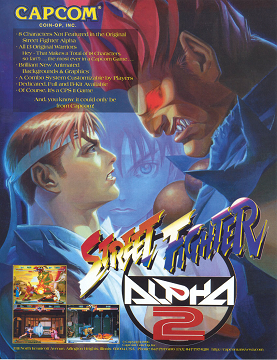
Street Fighter Alpha 2, known as Street Fighter Zero 2 in Japan, Asia, South America, and Oceania, is a 1996 fighting game originally released for the CPS II arcade hardware by Capcom. The game is a remake to the previous year's Street Fighter Alpha: Warriors' Dreams. The game features a number of improvements over the original, such as new attacks, stages, endings, and gameplay features. It was followed by Street Fighter Alpha 3.

Saturn Bomberman is an action video game by Hudson Soft for the Sega Saturn. The twelfth installment in the Bomberman series, it was first released in Japan on July 19, 1996, in Europe in May 1, 1997, and in North America in September 4, 1997. It is best known for its multiplayer functionality for up to ten players. The game received praise from critics for its enjoyable gameplay and multiplayer, but received criticism for not advancing the Bomberman series enough beyond previous installments.
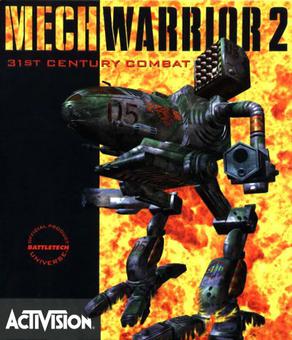
MechWarrior 2: 31st Century Combat is a vehicle simulation game developed and published by Activision, released in 1995 as part of the MechWarrior series of video games in the BattleTech franchise. The game is set in 3057, and is played as a tactical simulation that incorporates aspects of real-time first-person combat and the physical simulation of the player's mech. It is a game recreation of the "Refusal War." The player can join one of the clans, Clan Jade Falcon or Clan Wolf while engaging in up to 32 missions.

Black Dawn is a helicopter-combat simulation, published by Virgin Interactive Entertainment. It was released on the Sony PlayStation and the Sega Saturn in 1996.

The Pinball of the Dead is a pinball video game developed by Sega's Wow Entertainment division and published by Sega in Japan and THQ in North America. It was released for the Game Boy Advance in 2002 and 2003. Based on Sega's The House of the Dead series of light gun games, particularly The House of the Dead and The House of the Dead 2, the game contains three tables and includes a "Challenge" mode. Full-motion video sequences and audio samples from previous games were also added. The game was first announced during the 2001 Nintendo Space World. Composer Hitoshi Sakimoto was involved with making the game's music.
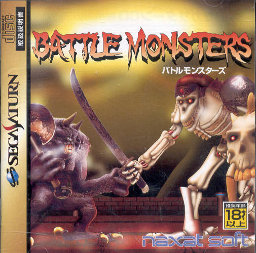
Battle Monsters (バトルモンスターズ) is a versus fighting game developed by Scarab for the Sega Saturn. It was originally published by Naxat Soft in Japan and later published in North America and Europe by Acclaim Entertainment. Similar to Atari's Pit-Fighter, the game makes heavy use of digitized human actors as the characters, plus some blood influenced by Midway's Mortal Kombat series. The game features 12 playable fighters, and plays out on multi-tiered stages.
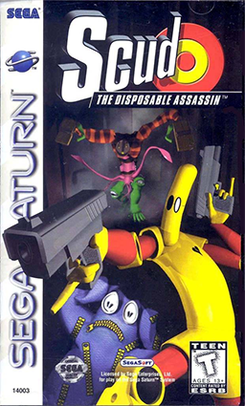
Scud: The Disposable Assassin is a Sega Saturn video game based on the comic book series of the same name. It was released on March 20, 1997 in North America only, though it is region-free. It is unusual in that it can be played either as a run and gun game, or with a light gun. The main characters and plotline are mostly the same from the comic series, and Scud creator Rob Schrab said that he felt it did justice to his characters.

NHL 97 is an ice hockey video game by EA Sports. It was released in 1996 and was the successor to NHL 96. It is the sixth installment of the NHL series and the first to be released on both PlayStation and Saturn. A Panasonic M2 version was in development and slated to be one of the launch titles for it, but never happened due to the cancellation of the system.

Baku Baku, released in Japan as Baku Baku Animal, is a falling block puzzle arcade game released by Sega in 1995. The game is dedicated as Sega's first ever Network Compatible PC Game. A Sega NetLink compatible version of the game was also announced, but never released.
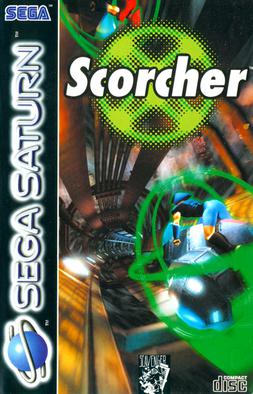
Scorcher is a futuristic racing video game by Danish developer Zyrinx, released in 1996 for the PC and in 1997 for the Sega Saturn. Originally announced under the name "Vertigo", the game focuses on special motorcycles that reach up to 450 km/h racing through dangerous tracks in a dystopian year 2021.

Dragonheart: Fire & Steel is a video game loosely based on the 1996 fantasy adventure film Dragonheart. On most systems it is a 2D side-scrolling action game, but the Game Boy version is an adventure game with combat scenes, where adventure mode uses a first-person view and combat mode is a simple 2D fighting game.
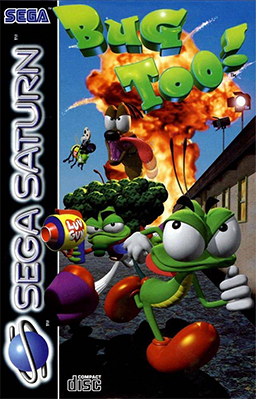
Bug Too! is a side-scrolling platforming video game developed by both Realtime Associates and SegaSoft. It is the sequel to Bug!, which was developed and published by Realtime Associates and Sega. It was first released for the Sega Saturn on December 6, 1996 in North America. It was later ported to Windows devices on December 10 of the same year in both North America and PAL regions. Finally, it was released in PAL regions for the Sega Saturn on April 24, 1997. Players are given the option of choosing from Bug, Maggot Dog, or Super Fly, a trio of action movie stars, who must proceed through a series of mostly 2D levels across multiple zones, with a boss level at the end of each zone.

Iron & Blood: Warriors of Ravenloft is a 3D fighting game released for PC and PlayStation.

BattleSport is a 1996 futuristic sports video game developed by Cyclone Studios. It was originally published by Studio 3DO exclusively for their 3DO Interactive Multiplayer in 1996, but after the 3DO was discontinued BattleSport was published for other systems by Acclaim Entertainment. It was released for Windows and PlayStation, Sega Saturn, and Windows in North America in July 1997, and in Europe on August 1, 1997.

CrimeWave is a vehicular combat video game, developed and published by Eidos Interactive, released as a Sega Saturn exclusive in 1996–1997.
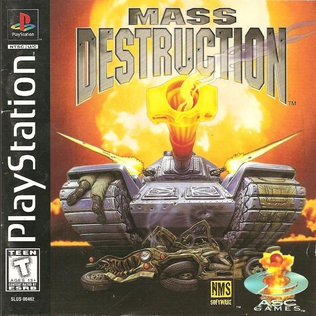
Mass Destruction is a 1997 third-person action game developed by NMS Software and published by ASC Games and BMG Interactive. Released for MS-DOS, the Sega Saturn, and the PlayStation, the game puts players in control of a tank, and tasks them with destroying enemy forces. It has often been likened to Return Fire.
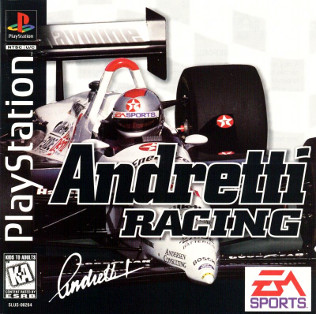
Andretti Racing is a video game developed by American studios High Score Productions and Stormfront Studios and published by EA Sports for the PlayStation and Sega Saturn in 1996, and for Windows in 1997. The game's title refers to legendary racing drivers Mario Andretti and Michael Andretti.

NFL Quarterback Club 97 is an American football video game released in 1996. The game was released on the PlayStation, Sega Saturn, and DOS systems. The game was also released in Japan on the Saturn. The game's cover features former Miami Dolphins quarterback Dan Marino.

Pro Pinball: Fantastic Journey is an action video game developed by Cunning Developments, published by Empire Interactive and distributed by Take-Two Interactive for Microsoft Windows and PlayStation. It is the fourth game in the Pro Pinball series. Elements of the game include combinations of Victorian era settings, steam powered machinery, steampunk style nautical adventures, and fictional islands.

True Pinball is a video game developed by Digital Illusions and published by Ocean for the PlayStation and Sega Saturn in 1996. It is an enhanced version of Pinball Illusions.





















